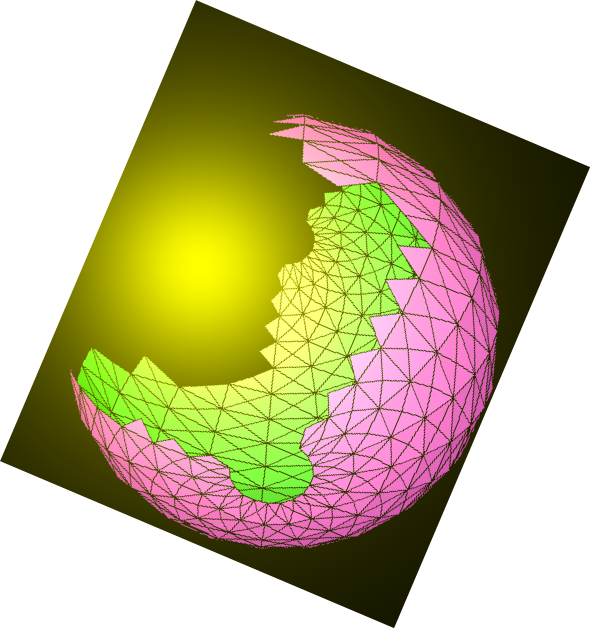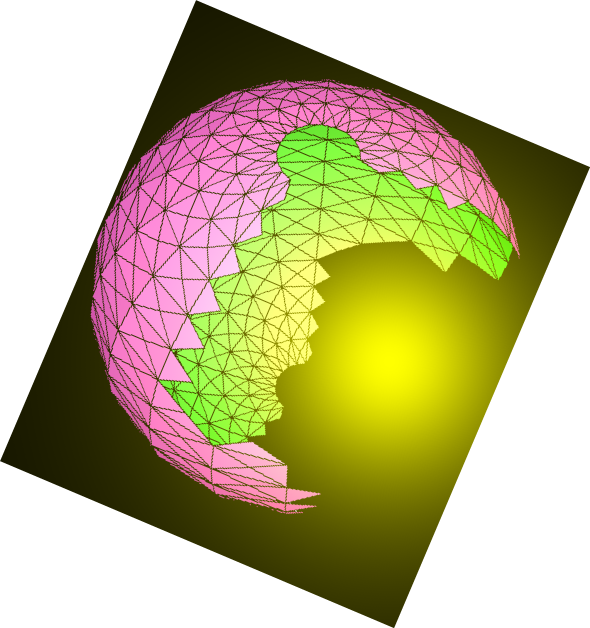
N.S.B. Cosmic Center
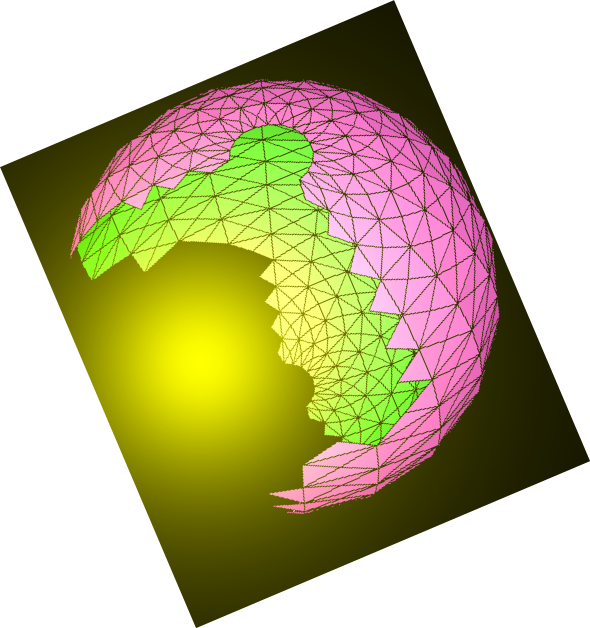
Literary Adventures
This page will take you into pieces of literature that are carefully selected for their great content at the literary, scientific, or philosophical level. A short selection will be presented in full. A long one will be divided into sections that will be refreshed regularly. Emphasis and highlights are mostly ours, not made by the original author.
Here is our current selection:
The Fairy-Land of Science (1878) by Arabella Burton Buckley
Lecture 7.
The Life of a Primrose
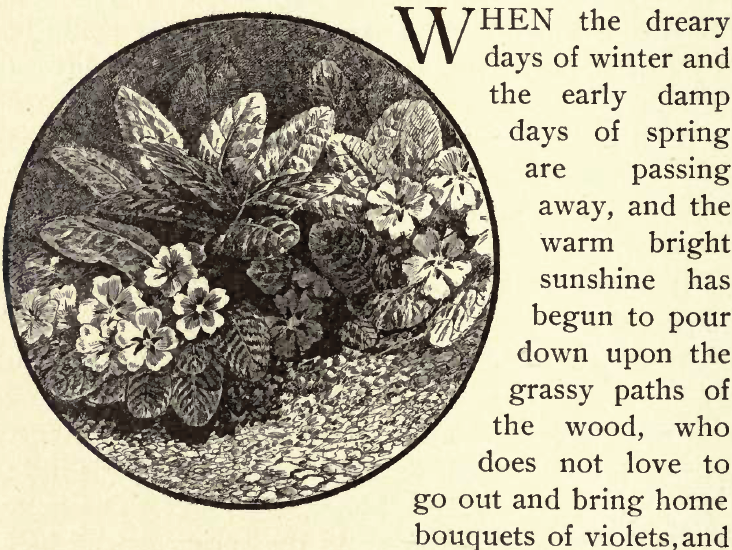
When the dreary days of winter and the early damp days of spring are passing away, and the warm bright sunshine has begun to pour down upon the grassy paths of the wood, who does not love to go out and bring home posies of violets, and bluebells, and primroses? We wander from one plant to another, picking a flower here and a bud there, as they nestle among the green leaves, and we make our rooms sweet and gay with the tender and lovely blossoms. But tell me, did you ever stop to think, as you added flower after flower to your nosegay, how the plants which bear them have been building up their green leaves and their fragile buds during the last few weeks? If you had visited the same spot a month before, a few last year's leaves, withered and dead, would have been all that you would have found. And now the whole wood is carpeted with delicate green leaves, with nodding bluebells, and pale-yellow primroses, as if a fairy had touched the ground and covered it with fresh young life. And our fairies have been at work here; the fairy "Life," of whom we know so little, though we love her so well and rejoice in the beautiful forms she can produce; the fairy sunbeams with their invisible influence kissing the tiny shoots and warming them into vigour and activity; the gentle rain-drops, the balmy air, all these have been working, while you or I passed heedlessly by; and now we come and gather the flowers they have made, and too often forget to wonder how these lovely forms have sprung up around us.
Our work during the next hour will be to consider this question. You were asked last week to bring with you today a primrose-flower, or a whole plant if possible, in order the better to follow out with me the "Life of a Primrose."* This is a very different kind of subject from those of our former lectures. There we took world-wide histories; we travelled up to the sun, or round the earth, or into the air; now I only ask you
*
There is a beautiful little poem by Tennyson, which says--
"Flower in the crannied wall,
I pluck you out of the crannies;
Hold you here, root and all, in my hand,
Little flower; but if I could understand
What you are, root and all, and all in all,
I should know what God and man is."
We cannot learn all about this little flower, but we can learn enough to understand that it has a real separate life of its own, well worth knowing. For a plant is born, breathes, sleeps, feeds, and digests just as truly as an animal does, though in a different way. It works hard both for itself to get its food, and for others in making the air pure and fit for animals to breathe. It often lays by provision for the winter. It sends young plants out, as parents send their children, to fight for themselves in the world; and then, after living sometimes to a good old age, it dies, and leaves its place to others.
We will try to follow out something of this life today; and first, we will begin with the seed.
I have here a packet of primrose-seeds, but they are so small that we cannot examine them; so I have also had given to each one of you an almond-kernel, which is the seed of the almond-tree, and which has been soaked, so that it splits in half easily. From this we can learn about seeds in general, and then apply it to the primrose.

If you peel the two skins off your almond-seed (the thick, brown, outside skin, and the thin, transparent one under it), the two halves of the almond will slip apart quite easily. One of these halves will have a small dent at the pointed end, while in the other half you will see a little lump, which fitted into the dent when the two halves were joined. This little lump (a b, Fig. 39) is a young plant, and the two halves of the almond are the seed-leaves which hold the plantlet, and feed it till it can feed itself. The rounded end of the plantlet (b) sticking out of the almond, is the beginning of the root, while the other end (a) will in time become the stem. If you look carefully, you will see two little points at this end, which are the tips of future leaves. Only think how minute this plantlet must be in a primrose, where the whole seed is scarcely larger than a grain of sand! Yet in this tiny plantlet lies hid the life of the future plant.
When a seed falls into the ground, so long as the earth is cold and dry, it lies like a person in a trance, as if it were dead; but as soon as the warm, damp spring comes, and the busy little sun-waves pierce down into the earth, they wake up the plantlet, and make it bestir itself. They agitate to and fro the particles of matter in this tiny body, and cause them to seek out for other particles to seize and join to themselves.
But these new particles cannot come in at the roots, for the seed has none; nor through the leaves, for they have not yet grown up; and so the plantlet begins by helping itself to the store of food laid up in the thick seed-leaves in which it is buried. Here it finds starch, oils, sugar, and substances called albuminoids,--the sticky matter which you notice in wheat-grains when you chew them is one of the albuminoids. This food is all ready for the plantlet to use, and it sucks it in, and works itself into a young plant with tiny roots at one end, and a growing shoot, with leaves, at the other.
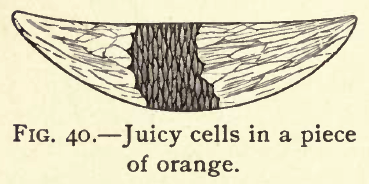
But how does it grow? What makes it become larger? To answer this, you must look at the second thing I asked you to bring--a piece of orange. If you take the skin off a piece of orange, you will see inside a number of long-shaped transparent bags, full of juice. These we call cells, and the flesh of all plants and animals is made up of cells like these, only of various shapes. In the pith of elder they are round, large, and easily seen (a, Fig. 41); in the stalks of plants they are long, and lap over each other (b, Fig. 41), so as to give the stalk strength to stand upright. Sometimes many cells growing one on the top of the other, break into one tube and make vessels. But whether large or small, they are all bags growing one against the other.
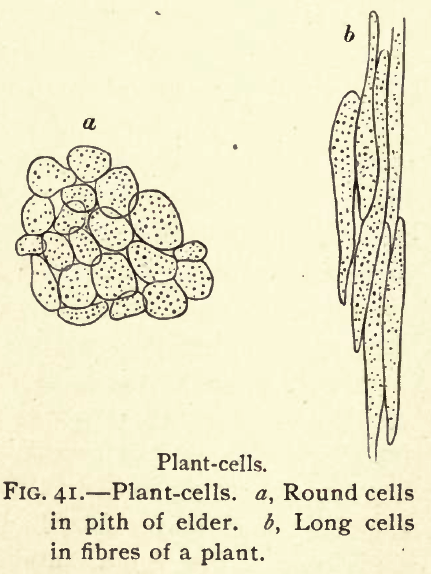
In the orange-pulp these cells contain only sweet juice, but in other parts of the orange-tree or any other plant they contain a sticky substance with little grains in it. This substance is called "protoplasm," or the first form of life, for it is alive and active, and under a microscope you may see in a living plant streams of the little grains moving about in the cells.
Now we are prepared to explain how our plant grows. Imagine the tiny primrose plantlet to be made up of cells filled with active living protoplasm, which drinks in starch and other food from the seed-leaves. In this way each cell will grow too full for its skin, and then the protoplasm divides into two parts and builds up a wall between them, and so one cell becomes two. Each of these two cells again breaks up into two more, and so the plant grows larger and larger, till by the time it has used up all the food in the seed-leaves, it has sent roots covered with fine hairs downwards into the earth, and a shoot with beginnings of leaves up into the air.
Sometimes the seed-leaves themselves come above ground, as in the mustard-plant, and sometimes they are left empty behind, while the plantlet shoots through them.
And now the plant can no longer afford to be idle and live on prepared food. It must work for itself. Until now it has been taking in the same kind of food that you and I do; for we too find many seeds very pleasant to eat and useful to nourish us. But now this store is exhausted. Upon what then is the plant to live? It is cleverer than we are in this, for while we cannot live unless we have food which has once been alive, plants can feed upon gases and water and mineral matter only. Think over the substances you can eat or drink, and you will find they are nearly all made of things which have been alive: meat, vegetables, bread, beer, wine, milk; all these are made from living matter, and though you do take in such things as water and salt, and even iron and phosphorus, these would be quite useless if you did not eat and drink prepared food which your body can work up into living matter.
But the plant, as soon as it has roots and leaves, begins to make living matter out of matter that has never been alive. Through all the little hairs of its roots it sucks in water, and in this water are dissolved more or less of the salts of ammonia, phosphorus, sulphur, iron, lime, magnesia, and even silica, or flint. In all kinds of earth there is some iron, and we shall see presently that this is very important to the plant.
Suppose, then, that our primrose has begun to drink in water at its roots. How is it to get this water up into the stem and leaves, seeing that the whole plant is made of closed bags or cells? It does it in a very curious way, which you can prove for yourselves. Whenever two fluids, one thicker than the other, such as treacle and water for example, are only separated by a skin or any porous substance, they will always mix, the thinner one oozing through the skin into the thicker one. If you tie a piece of bladder over a glass tube, half fill the tube with treacle, and then let the covered end rest in a bottle of water, in a few hours the water will get in to the treacle and the mixture will rise up in the tube till it flows over the top. Now, the saps and juices of plants are thicker than water, so, directly the water enters the cells at the root it oozes up into the cells above, and mixes with the sap. Then the matter in those cells becomes thinner than in the cells above, so it too oozes up, and in this way cell by cell the water is pumped up into the leaves.
When it gets there it finds our old friends the sunbeams hard at work. If you have ever tried to grow a plant in a cellar, you will know that in the dark its leaves remain white and sickly. It is only in the sunlight that a beautiful delicate green tint is given to them, and you will remember from Lecture II that this green tint shows that the leaf has used all the sun-waves except those which make you see green; but why should it do this only when it has grown up in the sunshine?
The reason is this: when the sunbeam darts into the leaf and sets all its particles quivering, it divides the protoplasm into two kinds, collected into different cells. One of these remains white, but the other kind, near the surface, is altered by the sunlight and by the help of the iron brought in by the water. This particular kind of protoplasm, which is called "chlorophyll," will have nothing to do with the green waves and throws them back, so that every little grain of this protoplasm looks green and gives the leaf its green colour.
It is these little green cells that by the help of the sun-waves digest the food of the plant and turn the water and gases into useful sap and juices. We saw in Lecture III that when we breathe-in air, we use up the oxygen in it and send back out of our mouths carbonic acid, which is a gas made of oxygen and carbon.
Now, every living thing wants carbon to feed upon, but plants cannot take it in by itself, because carbon is solid (the blacklead in your pencils is pure carbon), and a plant cannot eat, it can only drink-in fluids and gases. Here the little green cells help it out of its difficulty. They take in or absorb out of the air the carbonic acid gas which we have given out of our mouths, and then by the help of the sun-waves they tear the carbon and oxygen apart. Most of the oxygen they throw back into the air for us to use, but the carbon they keep.
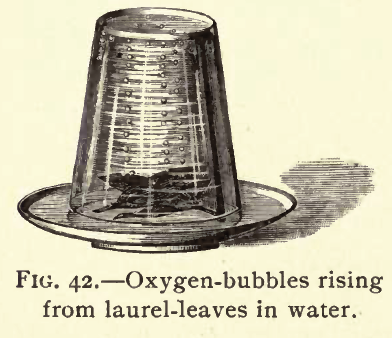
If you will take some fresh laurel-leaves and put them into a tumbler of water turned upside-down in a saucer of water, and set the tumbler in the sunshine, you will soon see little bright bubbles rising up and clinging to the glass. These are bubbles of oxygen gas, and they tell you that they have been set free by the green cells which have torn from them the carbon of the carbonic acid in the water.
But what becomes of the carbon? And what use is made of the water which we have kept waiting all this time in the leaves? Water, you already know is made of hydrogen and oxygen; but perhaps you will be surprised when I tell you that starch, sugar, and oil, which we get from plants, are nothing more than hydrogen and oxygen in different quantities joined to carbon.
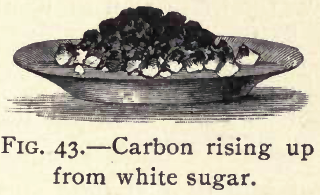
It is very difficult at first to picture such a black thing as carbon making part of delicate leaves and beautiful flowers, and still more of pure white sugar. But we can make an experiment by which we can draw the hydrogen and oxygen out of common loaf sugar, and then you will see the carbon stand out in all its blackness. I have here a plate with a heap of white sugar in it. I pour upon it first some hot water to melt and warm it, and then some strong sulphuric acid. This acid does nothing more than simply draw the hydrogen and oxygen out. See! in a few moments a black mass of carbon begins to rise, all of which has come out of the white sugar you saw just now.** You see, then, that from the whitest substance in plants we can get this black carbon; and in truth, one-half of the dry part of every plant is composed of it.
**
Now look at my plant again, and tell me if we have not already found a curious history? Fancy that you see the water creeping in at the roots, oozing up from cell to cell till it reaches the leaves, and there meeting the carbon which has just come out of the air, and being worked up with it by the sun-waves into starch, or sugar, or oils.
But meanwhile, how is new protoplasm to be formed? for without this active substance none of the work can go on. Here comes into use a lazy gas we spoke of in Lecture III. There we thought that nitrogen was of no use except to float oxygen in the air, but here we shall find it very useful. So far as we know, plants cannot take up nitrogen out of the air, but they can get it out of the ammonia which the water brings in at their roots.
Ammonia, you will remember, is a strong-smelling gas, made of hydrogen and nitrogen, and which is often almost stifling near a manure-heap. When you manure a plant you help it to get this ammonia, but at any time it gets some from the soil and also from the rain-drops which bring it down in the air. Out of this ammonia the plant takes the nitrogen and works it up with the three elements, carbon, oxygen, and hydrogen, to make the substances called albuminoids, which form a large part of the food of the plant, and it is these albuminoids which go to make protoplasm. You will notice that while the starch and other substances are only made of three elements, the active protoplasm is made of these three added to a fourth, nitrogen, and it also contains phosphorus and sulphur.
And so hour after hour and day after day our primrose goes on pumping up water and ammonia from its roots to its leaves, drinking in carbonic acid from the air, and using the sun-waves to work them all up into food to be sent to all parts of its body. In this way these leaves act, you see, as the stomach of the plant, and digest its food.
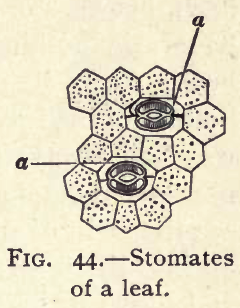
Sometimes more water is drawn up into the leaves than can be used, and then the leaf opens thousands of little mouths in the skin of its under surface, which let the drops out just as drops of perspiration ooze through our skin when we are over-heated. These little mouths, which arecalled stomates (a, Fig. 44) are made of two flattened cells, fitting against each other. When the air is damp and the plant has too much water these lie open and let it out, but when the air is dry, and the plant wants to keep as much water as it can, then they are closely shut. There are as many as a hundred thousand of these mouths under one apple-leaf, so you may imagine how small they often are.
Plants which only live one year, such as mignonette, the sweet pea, and the poppy, take in just enough food to supply their daily wants and to make the seeds we shall speak of presently. Then, as soon as their seeds are ripe their roots begin to shrivel, and water is no longer carried up. The green cells can no longer get food to digest, and they themselves are broken up by the sunbeams and turn yellow, and the plant dies.
But many plants are more industrious than the stock and mignonette, and lay by store for another year, and our primrose is one of these. Look at this thick solid mass below the primrose leaves, out of which the roots spring. This is really the stem of the primrose hidden underground, and all the starch, albuminoids, &c., which the plant can spare as it grows, are sent down into this underground stem and stored up there, to lie quietly in the ground through the long winter, and then when the warm spring comes this stem begins to send out leaves for a new plant.
We have now seen how a plant springs up, feeds itself, grows, stores up food, withers, and dies; but we have said nothing yet about its beautiful flowers or how it forms its seeds. If we look down close to the bottom of the leaves in a primrose root in spring-time, we shall always find three or four little green buds nestling in among the leaves, and day by day we may see the stalk of these buds lengthening till they reach up into the open sunshine, and then the flower opens and shows its beautiful pale-yellow crown.
We all know that seeds are formed in the flower, and that the seeds are necessary to grow into new plants. But do we know the history of how they are formed, or what is the use of the different parts of the bud? Let us examine them all, and then I think you will agree with me that this is not the least wonderful part of the plant.
Remember that the seed is the one important thing, and then notice how the flower protects it. First, look at the outside green covering, which we call the calyx. See how closely it fits in the bud, so that no insects can creep in to gnaw the flower, nor any harm come to it from cold or blight. Then, when the calyx opens, notice that the yellow leaves which form the crown or corolla, are each alternate with one of the calyx leaves, so that anything which got past the first covering would be stopped by the second. Lastly, when the delicate corolla has opened out, look at those curious yellow bags just at the top of the tube (2 b, Fig 45). What is their use?
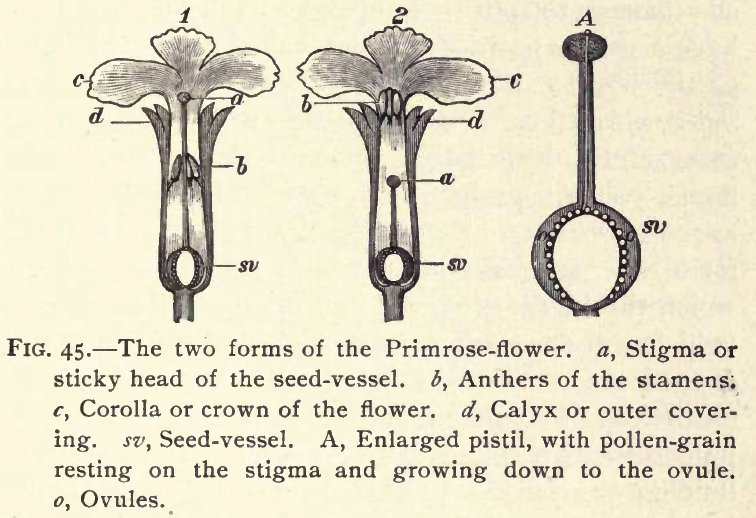
But I fancy I see two or three little questioning faces which seem to say, "I see no yellow bags at the top of the tube." Well, I cannot tell whether you can or not in the specimen you have in your hand; for one of the most curious things about primrose flowers is, that some of them have these yellow bags at the top of the tube and some of them hidden down right in the middle. But this I can tell you: those of you who have got no yellow bags at the top will have a round knob there (1 a, Fig. 45), and will find the yellow bags (b) buried in the tube. Those, on the other hand, who have the yellow bags (2 b, Fig. 45) at the top will find the knob (a) half-way down the tube.
Now for the use of these yellow bags, which are called the anthers of the stamens, the stalk on which they grow being called the filament or thread. If you can manage to split them open you will find that they have a yellow powder in them, called pollen, the same as the powder which sticks to your nose when you put it into a lily; and if you look with a magnifying glass at the little green knob in the centre of the flower you will probably see some of this yellow dust sticking on it (A, Fig. 45). We will leave it there for a time, and examine the body called the pistil, to which the knob belongs. Pull off the yellow corolla (which will come off quite easily), and turn back the green leaves. You will then see that the knob stands on the top of a column, and at the bottom of this column there is a round ball (s v), which is a vessel for holding the seeds. In this diagram (A, Fig. 45) I have drawn the whole of this curious ball and column as if cut in half, so that we may see what is in it. In the middle of the ball, in a cluster, there are a number of round transparent little bodies, looking something like round green orange-cells full of juice. They are really cells full of protoplasm, with one little dark spot in each of them, which by-and-by is to make our little plantlet that we found in the seed.
"These, then, are seeds," you will say. Not yet; they are only ovules, or little bodies which may become seeds. If they were left as they are they would all wither and die. But those little yellow grains of pollen, which we saw sticking to the knob at the top, are coming down to help them. As soon as these yellow grains touch the sticky knob or stigma, as it is called, they throw out tubes, which grow down the column until they reach the ovules. In each one of these they find a tiny hole, and into this they creep, and then they pour into the ovule all the protoplasm from the pollen-grain which is sticking above, and this enables it to grow into a real seed with a tiny plantlet inside.
This is how the plant forms its seed to bring up new little ones next year, while the leaves and the roots are at work preparing the necessary food. Think sometimes when you walk in the woods, how hard at work the little plants and big trees are, all around you. You breathe in the nice fresh oxygen they have been throwing out, and little think that it is they who are making the country so fresh and pleasant, and that while they look as if they were doing nothing but enjoying the bright sunshine, they are really fulfilling their part in the world by the help of this sunshine; earning their food from the ground; working it up; turning their leaves where they can best get light (and in this it is chiefly the violet sun-waves that help them), growing, even at night, by making new cells out of the food they have taken in the day; storing up for the winter; putting out their flowers and making their seeds, and all the while smiling so pleasantly in quiet nooks and sunny dells that it makes us glad to see them.
But why should the primroses have such golden crowns? plain green ones would protect the seed quite as well. Ah! now we come to a secret well worth knowing. Look at the two primrose flowers, 1 and 2, Fig. 45, and tell me how you think the dust gets on to the top of the sticky knob or stigma. Now the curious truth is, as Mr. Darwin has shown, that neither of these flowers can get the dust easily for themselves, but of the two No. 1 has the least difficulty.
Look at a withered primrose, and see how it holds its head down, and after a little while the yellow crown falls off. It is just about as it is falling that the anthers or bags of the stamens burst open, and then, in No. 1 (Fig. 46), they are dragged over the knob and some of the grains stick there. But in the other form of primrose, No. 2, when the flower falls off, the stamens do not come near the knob, so it has no chance of getting any pollen; and while the primrose is upright the tube is so narrow that the dust does not easily fall. But, as I have said, neither kind gets it very easily, nor is it good for them if they do. The seeds are much stronger and better if the dust or pollen of one flower is carried away and left on the knob or stigma of another flower; and the only way this can be done is by insects flying from one flower to another and carrying the dust on their legs and bodies.
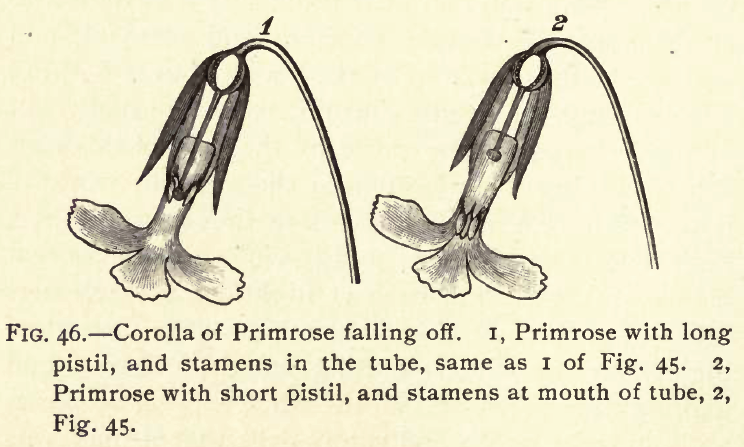
If you suck the end of the tube of the primrose flower you will find it tastes sweet, because a drop of honey has been lying there. When the insects go in to get this honey, they brush themselves against the yellow dust-bags, and some of the dust sticks to them, and then when they go to the next flower they rub it off on to its sticky knob.
Look at No. 1 and No. 2 (Fig. 45) and you will see at once that if an insect goes into No. 1 and the pollen sticks to him, when he goes into No. 2 just that part of his body on which the pollen is will touch the knob; and so the flowers become what we call "crossed," that is, the pollen-dust of the one feeds the ovule of the other. And just the same thing will happen if he flies from No. 2 to No. 1. There the dust will be just in the position to touch the knob which sticks out of the flower.
Therefore, we can see clearly that it is good for the primrose that bees and other insects should come to it, and anything it can do to entice them will be useful. Now, do you not think that when an insect once knew that the pale-yellow crown showed where honey was to be found, he would soon spy these crowns out as he flew along? or if they were behind a hedge, and he could not see them, would not the sweet scent tell him where to come and look for them? And so we see that the pretty sweet-scented corolla is not only delightful for us to look at and to smell, but it is really very useful in helping the primrose to make strong healthy seeds out of which the young plants are to grow next year.
And now let us see what we have learnt. We began with a tiny seed, though we did not then know how this seed had been made. We saw the plantlet buried in it, and learnt how it fed at first on prepared food, but soon began to make living matter for itself out of gases taken from the water and the air. How ingeniously it pumped up the water through the cells to its stomach--the leaves! And how marvellously the sun-waves entering there formed the little green granules, and then helped them to make food and living protoplasm! At this point we might have gone further, and studied how the fibres and all the different vessels of the plant are formed, and a wondrous history it would have been. But it was too long for one hour's lecture, and you must read it for yourselves in books on botany. We had to pass on to the flower, and learn the use of the covering leaves, the gaily coloured crown attracting the insects, the dust-bags holding the pollen, the little ovules each with the germ of a new plantlet, lying hidden in the seed-vessel, waiting for the pollen-grains to grow down to them. Lastly, when the pollen crept in at the tiny opening we learnt that the ovule had now all it wanted to grow into a perfect seed.
And so we came back to a primrose seed, the point from which we started; and we have a history of our primrose from its birth to the day when its leaves and flowers wither away and it dies down for the winter.
But what fairies are they which have been at work here? First, the busy little fairy Life in the active protoplasm; and secondly, the sun-waves. We have seen that it was by the help of the sunbeams that the green granules were made, and the water, carbonic acid, and nitrogen worked up into the living plant. And in doing this work the sun-waves were caught and their strength used up, so that they could no longer quiver back into space. But are they gone for ever? So long as the leaves or the stem or the root of the plant remain they are gone, but when those are destroyed we can get them back again. Take a handful of dry withered plants and light them with a match, then as the leaves burn and are turned back again to carbonic acid, nitrogen, and water, our sunbeams come back again in the flame and heat.
And the life of the plant? What is it, and why is this protoplasm always active and busy? I cannot tell you. Study as we may, the life of the tiny plant is as much a mystery as your life and mine. It came, like all things, from the bosom of the Great Father, but we cannot tell how it came nor what it is. We can see the active grains moving under the microscope, but we cannot see the power that moves them. We only know it is a power given to the plant, as to you and to me, to enable it to live its life, and to do its useful work in the world.
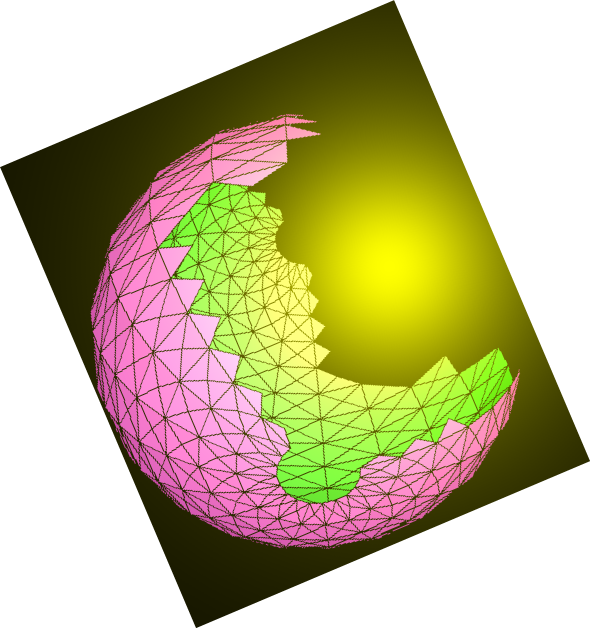
Home
N.S.B. Cosmic Center
